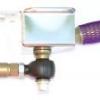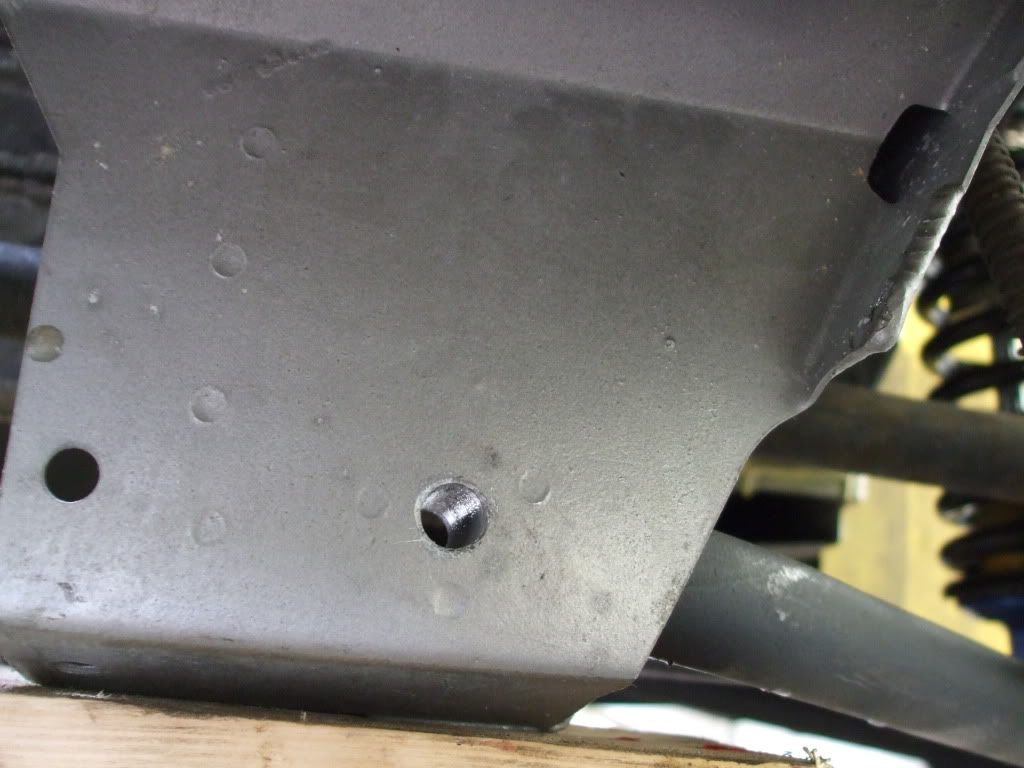I have posted this across from the SELOC forum as it contains information regarding high spec bolts.
[color=rgb(0,0,0);font-family:Verdana, Arial, helvetica, sans-serif;font-size:12px;font-weight:normal;]Quote:[/color]Originally posted by jbt_se
I broke one outer toe link bolt last year (luckily in slowest corner of the track). The bolt broke at the thread root which is the weakest point of the bolt. One problem with the kit is that it uses standard bolts with way too much thread on the bolt and as a result of this the thread root ends up just between the upright and the spacer which is the shear point.
This is true if the upper collet design is loose in the upright for two reasons.
First, if the entire assembly can slide sideways until the bolt contacts the side of the hole in the upright, then this contact point now becomes the fulcrum, this will a impart a very high shear force on the bolt.
If the collet hits the side of the recess first then the outer side of the collet becomes the fulcrum and most of the applied forces are now taken as increased tension on the bolt. (as an added bonus you reduce the mechanical advantage at the same time, as the edge of the collet is much further away from the centre of the bolt than the edge of the bolt! 
Although the bolt will probably still fail at the same point due to excess tension (regardless if it is at the entry to the upright or completely out of it) but if this section is also on the fulcrum it is easy to see how it is overloaded easier now, being at the physical point of application of the shear forces which will include contact deformation as well.
So plan A is to make sure the collet is close fitting in the upright recess to stop the bolt sliding sideways and making sure the collet takes some of the shear directly
Secondly is what happens after the bolt stretches (things are already not acceptable).
In the loose collet case, the external assembly will rotate around the contact point until either the collet hits the side of the upright (this may be too late for the bolt or at least it will start the cycle which will cause it to fail later)
Now a very important observation becomes evident IF the collet design is not going to stop assembly rotation then, ironically, you would be better with an 8.8 bolt as at least this is less likely to fail first time.
If during rotation the collet touches the upright, or is already touching the upright then the collet is the new fulcrum with a much reduced load on the bolt, bizarrely the forces may even be reversed on the bolt as the collet rotates on the new fulcrum.
So plan B is to make sure the collet is close fitting so if the bolt does yield any motion is restricted to a few microns before the collet does the work. In this case a 10.9 is a better option as the risk of bending is almost zero.
Luckily for us plan A and plan B are the same 
So, in conclusion this is not just a simple bolt failure it is more a design issue.
The choice of 8.8 or 10.9 is a function of the collet design, 10.9 may not be the best choice.
What is the best choice is a very close fitting collet made from something really hard like Ray Winstone, or 7068, this allows you use a 10.9 and get all the benefits without most of the risk.
Even better ream the upright to 12mm, and use an M12 x 8.8

![]()





















